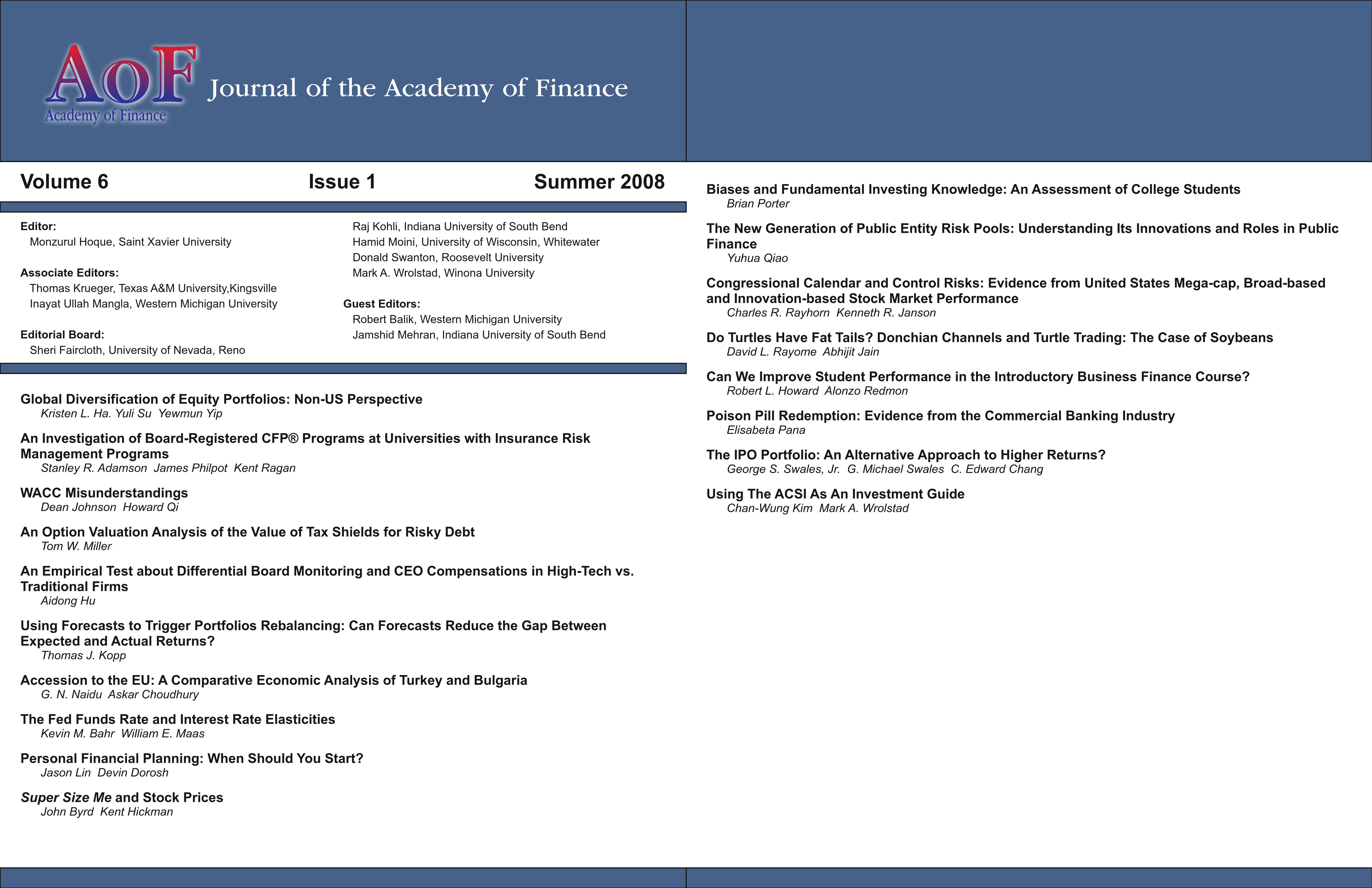The Fed Funds Rate and Interest Rate Elasticities
DOI:
https://doi.org/10.58886/jfi.v6i1.2427Abstract
The federal funds rate is an important, short-term interest rate which is targeted by the Federal Reserve to influence economic growth and inflation. The financial markets closely monitor the Federal Reserve's monetary policy and changes in the federal funds rate to gauge future economic performance. This research analyzes how changes in the federal funds rate affected the 1) yield curve, 2) 30-year fixed mortgage rate, and 3) spread between Aaa and Baa corporate bond yields. The purpose is to determine the rippling effect between changes in the federal funds rate and changes in interest rates that affect the cost of borrowing by firms, individuals, and the government. The empirical results indicate that when a basis point change of 25 points or more occurs to the fed funds rate, which is of a magnitude consistent with a change in Federal Reserve policy, a statistically significant, positively related change occurs in the one-month interest rate elasticities for the 3-Month Treasury rate, 1-Year Treasury rate, 5-Year Treasury rate, 10-Year Treasury rate, and the 30-Year Mortgage rate.





